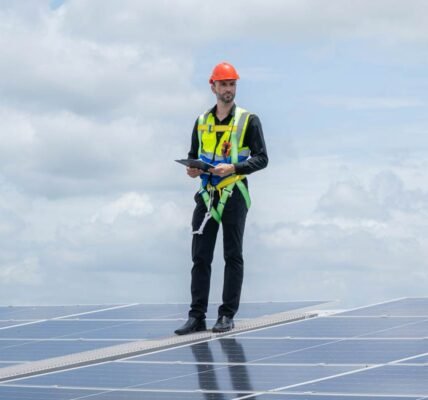 According to the most recent Africa Solar Industry Association (Afsia) report, 2023 was the best year for solar in the world – and in Africa.
According to the most recent Africa Solar Industry Association (Afsia) report, 2023 was the best year for solar in the world – and in Africa.
With around 350GW of solar installed worldwide last year, solar has reached new heights in terms of new installed capacity, with a 46% increase compared to 2022. In Africa, too, a new record was broken, with more than 3.7GWp (peak) of new solar installations coming online in 2023.
After a solid 2022, the appetite for solar in Africa grew another 19% in 2023 with the addition of 3.7GWp. In 2023 alone, the equivalent of a third of all the solar installed historically in Africa was added on the continent. As a result, Africa is now home to more than 16GWp of solar energy capacity.
South Africa
With an estimated 7.8GW of solar – not including residential installations – by the end of 2023, the country now hosts almost 50% of all installed capacity on the continent and is by far the leader in solar installations in Africa.
in 2023, 79% of all new capacity installed in the past year was installed in South Africa (almost 3GWp out of a total 3.75GWp). In fact, South Africa saw the biggest increase in solar installations in African history for two consecutive years – 2022 and 2023.
Many other countries are also making progress, but in much smaller magnitude. According to the report:
- In 2023, only one country – South Africa – installed more than 100MW;
- Seventeen countries installed more than 10MW and less than 100MW; and
- Twenty-seven countries installed more than 1MW and less than 10MW.
Based on information gathered for this year’s Afsia report, the top five countries with the largest new capacities installed in 2023 were South Africa (2.97GWp); Burkina Faso (92MWp); Mauritania (84MWp); Kenya (69.5MWp); and the Central African Republic (40MWp).
Until recently, the lion’s share of solar in Africa was driven by large-scale grid-connected projects tendered by national governments with the support of international institutions. But recent data indicates a drastic change in this picture, with the majority of megawatts now being installed through commercial and industrial (C&I) projects, projects installed directly at companies and businesses with the purpose of this solar electricity being consumed directly on the premises.
 In 2023, C&I projects represented 65% of all new capacity added in Africa, with 2.4GWp installed – more than double what was commissioned for large-scale projects in 2023. This trend is supported by sharply declining equipment prices and a growing offer of financing solutions, which make it significantly easier for companies to produce electricity for their own consumption.
In 2023, C&I projects represented 65% of all new capacity added in Africa, with 2.4GWp installed – more than double what was commissioned for large-scale projects in 2023. This trend is supported by sharply declining equipment prices and a growing offer of financing solutions, which make it significantly easier for companies to produce electricity for their own consumption.
The other noticeable trend is the exponential rise of green hydrogen projects across the continent. The race to produce the cheapest green hydrogen is global, and several African countries are ideally positioned to win that race thanks to excellent solar irradiation and access to international maritime routes, the report found.
Read: Going solar? The pros and cons of leasing vs buying
Mauritania is one of the most ambitious African countries in this regard, with 57GW of planned projects. This represents almost 60% of all African green hydrogen development and almost 30% of all solar currently being developed on the continent. – © 2024 NewsCentral Media


